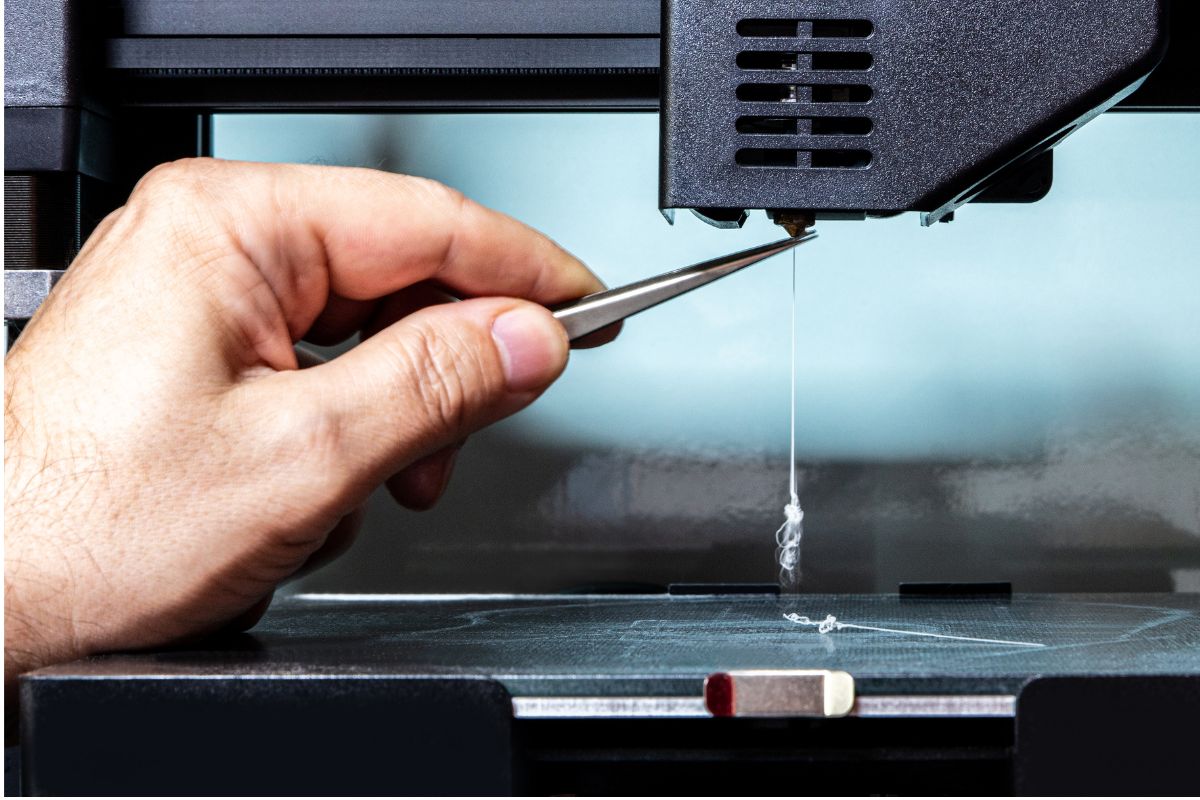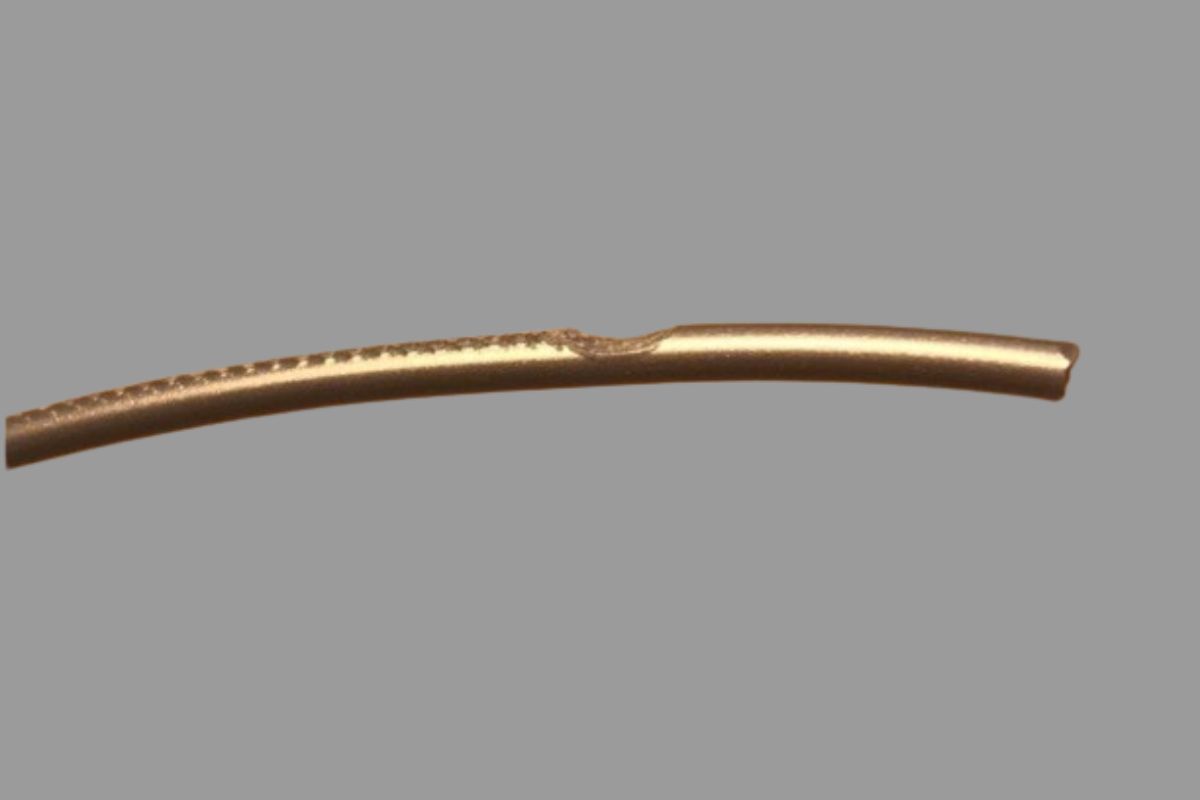:quality(80)/business-review.eu/wp-content/uploads/2024/06/Filament-Grinding.jpg)
A typical issue with 3D printing is filament grinding, which happens when the extruder pulls plastic out of the filament instead of pushing it through the hot end.
If you do this while printing with coloured filament, you may hear a grinding or clicking sound coming from the extruder motor and see powder particles in the filament.
Achieving successful 3D prints requires an understanding of filament grinding’s causes and the imposition of appropriate solutions.
What Causes Filament Grinding?
1. Inadequate Lubrication of the Filament
Not using enough lubricant during the extrusion process is a major cause of filament grinding. Without proper lubrication, the filament can grind against the extruder walls due to excessive friction. Among the many potential causes of inadequate lubrication are:
- Grinding can occur when filament is either too dry or has an insufficient amount of lubricating dealers. Grinding is more likely to occur during printing with dry filament because of its increased susceptibility to friction-related issues.
- When debris, grime, or other impurities accumulate inside the extruder, it can hinder the proper movement of the filament, leading to increased friction and grinding. To avoid this problem, be sure to clean and repair the extruder regularly.

2. Nozzle Having Blockages or Clogs
A partially or completely blocked nozzle is another typical cause of filament grinding. If the nozzle gets clogged, the extruder will grind to get the filament through, which will interrupt its easy drift.
When dust, filth, or other particles build up on the filament, they might transfer to the nozzle and cause frequent jams. Filaments that are unsightly or poorly stored can also be a source of contaminants.
3. Extruder Calibration and Tension Issues
One major factor that might lead to filament grinding is using the wrong tension settings and incorrectly calibrating the extruder.
Overly high tension or improper extruder calibration might cause the filament to grind against the extruder gear or hobbed bolt due to excessive pressure applied to it.
Grinding can occur if the extruder fails to feed the filament continuously due to inaccurate SPU calibration. Properly calibrating the extruder is essential for precise filament management.
4. Wrong Printing Speed and Temperature
One factor that can lead to filament grinding is using the wrong printing speed and temperature settings.
Grinding issues may arise as a result of the combined effects of these factors on filament float and its interactions with the extruder. Factors related to printing speed and temperature include:
When you print at really high rates, the extruder could pull too hard on the filament, which can grind it. The filament will shred because it can’t melt and waft easily with fast movements.
Mistakes in the filament’s temperature settings might cause float and irregular melting. Grinding can occur when the extruder tries to force the filament through the nozzle because it hasn’t melted sufficiently due to an extremely low temperature.
5. Inconsistency in Diameter and Filament Quality
When it comes to filament grinding, the filament’s consistency and pleasantness can also play a significant role.
Grinding can occur as a result of aberrant drift and increased friction caused by inconsistent filament diameter or poor filament quality. Some of the reasons why filament quality and diameter are important include:
Problems could arise during extrusion if the filaments’ sizes are not constant or exact. Filament grinding can occur when there are changes in diameter because it causes flow irregularities and increased friction.
Impurities, a jagged composition, or uneven qualities are all signs of low-quality or poorly synthesised filament. The filament grinding process can benefit from these components’ uneven melting and waft characteristics.
How To Resolve the Filament Grinding Issue?
1. Lower Printing Speed While Raising Hotend Temperature
Occasionally, to make the filament flow easier, it’s necessary to raise the temperature of the hotend by 5-10 degrees.

The extruder will need less force to push when the material flows more easily, and filament will be less likely to become stuck.
Slow down the printing process if filament grinding persists. Rapid printing causes the extruder drive gear to spin rapidly, which in turn causes it to generate heat.
Material with a low melting point, such as PLA, may become pliable and cling to the extruder. Find out whether it helps by reducing the printing speed by 30~50%.
2. Clean Up The Dusty Gear
Dust and filament residue tend to accumulate around the extruder gear during lengthy printing. This can make the extruder slip and prevent it from performing properly. This may explain why your prints initially succeed but progressively fail.
To remove the dust, just blow on the extruder. Obtain a nozzle brass brush and just brush off the residue surrounding the nozzle if the dust or filament remains trapped in the nozzle. as well as any other tools that aren’t too rough to damage your extruder.
3. Strong Retraction Preferences
You should verify the extruder’s retraction settings as a first step. Extruder overheating and filament failure can occur when retraction speeds are too high or when you attempt to retract an excessive amount of filament.
One simple thing you can do to check if the issue disappears is to decrease your retraction speed by half. Then you know that the issue can lie with your retraction settings.
4. Avoid Printing Too Fast
If filament grinding persists after raising the temperature, lowering the printing speed should be the next step. Extruding the filament over a longer duration reduces the torque required of the extruder motor.
To prevent grinding problems, turn the extruder motor down a notch. To change this value, go to “Edit Process Settings” and then pick the Speeds tab.
To change the speed at which the extruder actively extrudes plastic, go to the “Default Printing Speed” menu. If the filament grinding persists after reducing the print speed from 3600 mm/min (60 mm/s), for instance, try lowering the speed by 50%.
5. Consistency in Diameter and Filament Quality
The key to reducing grinding problems is using high-quality filament with a consistent diameter. If you want to avoid filament-related issues, use filament from genuine makers and check the diameter of the filament before printing.
6. Clean The Nozzle
Dreadful issues, like filament grinding, might arise from clogged nozzles. It is possible for the extruder’s feeding rate to surpass the nozzle’s working speed if there is any remnant of prior printing material inside the nozzle.
Because of this, you might hear clicking and see filament grinding when you try to feed the filament into the extruder.
It is crucial to always clean the nozzle after printing, but it is especially important if the print fails. This maintenance task, however, is not difficult. To clear the nozzle of debris, you can use a brush and needle.
Best 3D Printing Software
SelfCAD is an easy to use 3D modeling software that comes with all the features required to create a model and prepare it for 3D printing.
It is packed with features such as parametric modeling and sculpting for creating 3D models. Other features such as slicing and G-code editing help you prepare the model for 3D printing.
If you are new to 3D modeling, SelfCAD offers interactive tutorials to help you learn 3D modeling. The tools featured in SelfCAD are trusted by professionals.
SelfCAD also comes with a cloud-based access feature allowing you to access your work from any location through a browser.
Final Verdict
Many things can go wrong with your extruder, leading to filament grinding, including improper retraction settings, low temperature and underextrusion, PTFE tubing breakage, excessive feeder strain, or a mix of these and other difficulties. A remedy will be available based on the nature of the problem.
Users can overcome filament grinding difficulties and achieve better printing results by addressing these aspects with the correct calibration, moisture manipulation, and print settings tweaks.




:quality(80)/business-review.eu/wp-content/uploads/2024/07/VGP-Park-Timisoara_-8thbuilding_iulie-24.jpg)



:quality(80)/business-review.eu/wp-content/uploads/2024/06/22C0420_006.jpg)

:quality(80)/business-review.eu/wp-content/uploads/2024/06/COVER-1-4.jpg)



:quality(80)/business-review.eu/wp-content/uploads/2024/06/br-june-2.jpg)
:quality(50)/business-review.eu/wp-content/uploads/2024/07/America-House-Offices-Bucharest-Fortim-Trusted-Advisors.jpg)
:quality(50)/business-review.eu/wp-content/uploads/2024/07/BeFunky-collage-33-scaled.jpg)
:quality(50)/business-review.eu/wp-content/uploads/2024/07/BeFunky-collage-32-scaled.jpg)